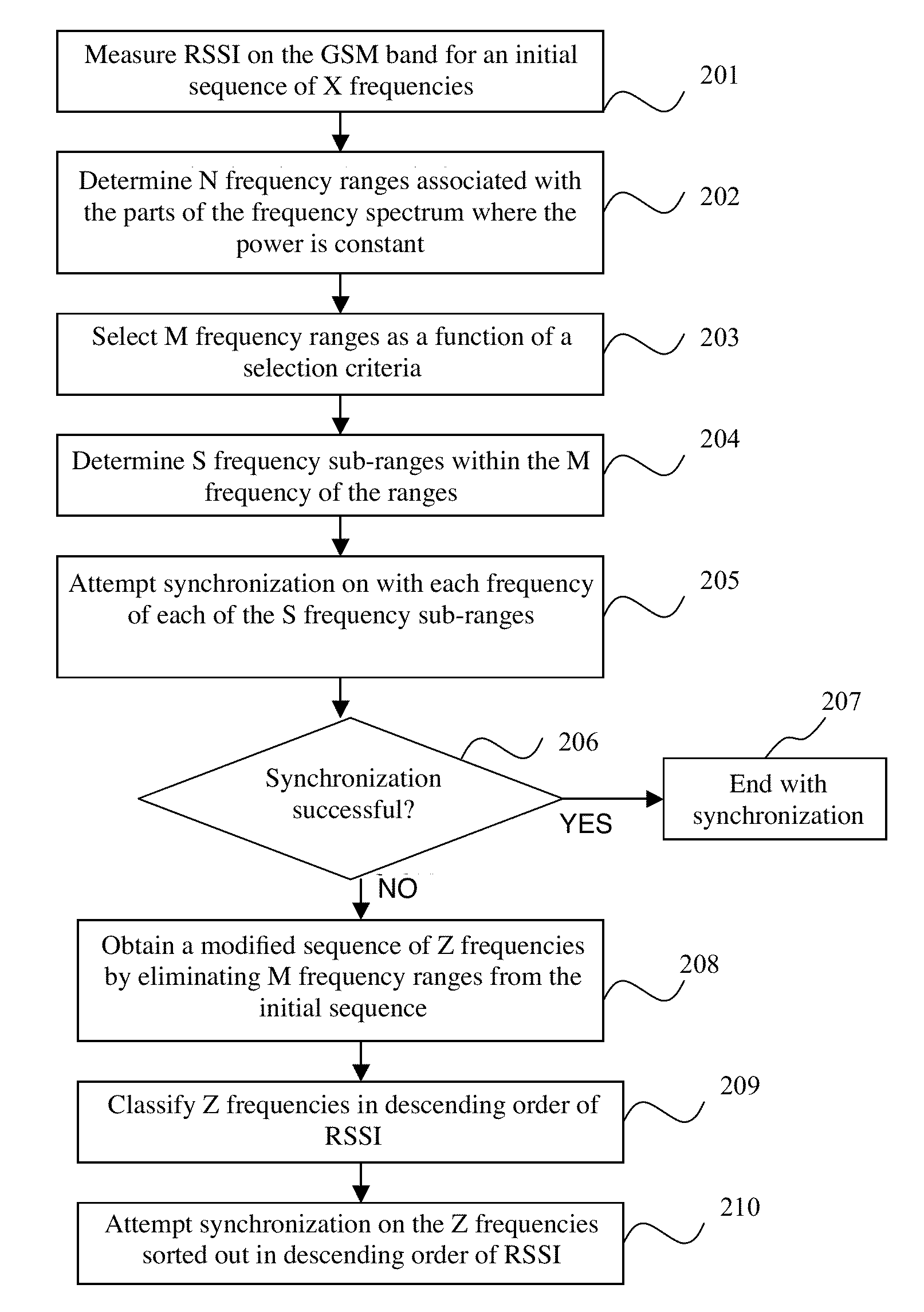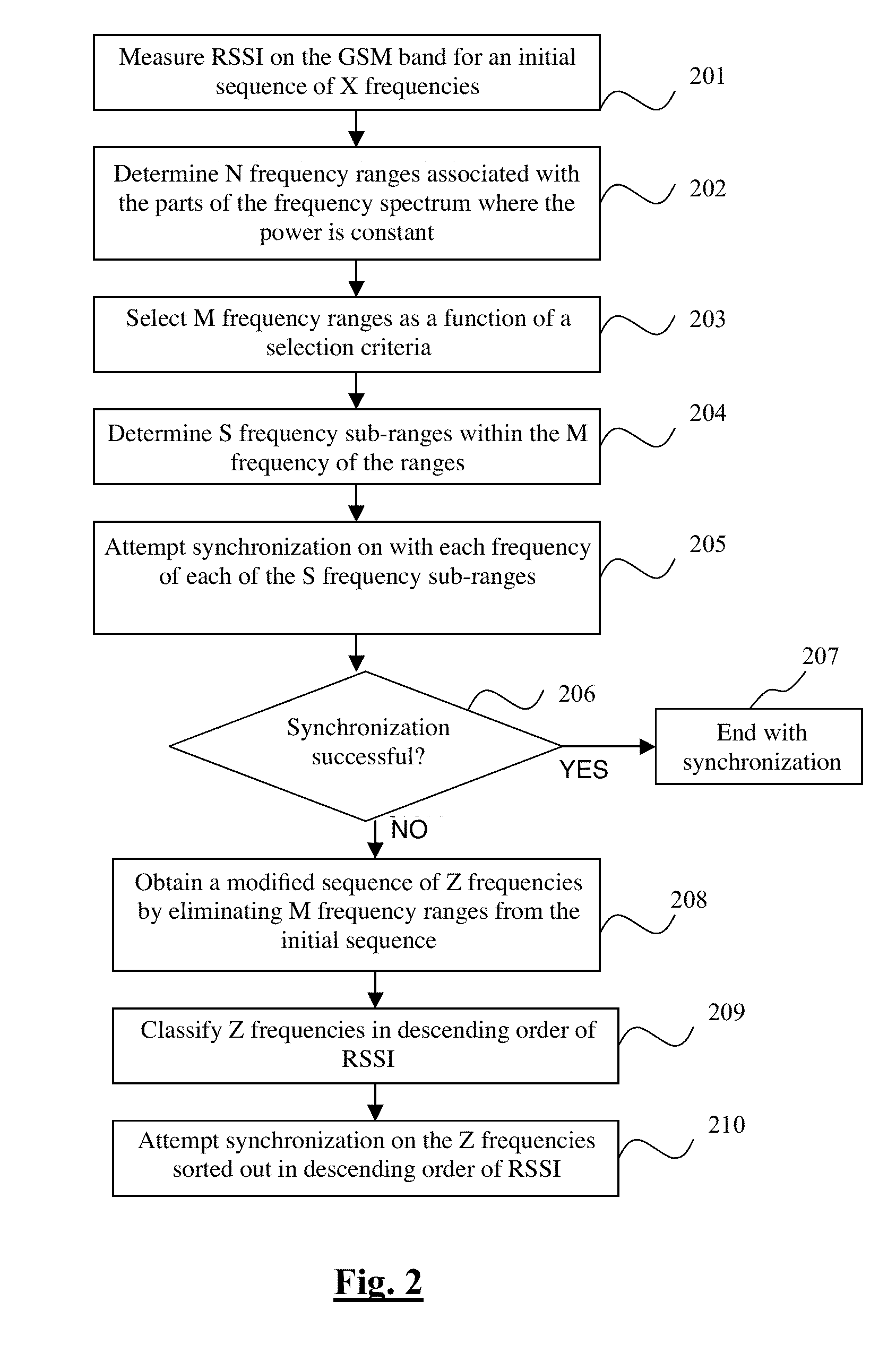Method for synchronizing a terminal with a frequency of a radio-communications network, corresponding computer software product, storage means and terminal
a radiocommunications terminal and frequency technology, applied in the field of radiocommunication systems, can solve the problems of affecting the operation of the narrow-band radiocommunication system, affecting the effective synchronization of the gsm terminal on the beacon frequency of the gsm network, and affecting the operation of the terminal, so as to reduce the energy consumption of the terminal
- Summary
- Abstract
- Description
- Claims
- Application Information
AI Technical Summary
Benefits of technology
Problems solved by technology
Method used
Image
Examples
Embodiment Construction
[0065]A technique is proposed for rapidly and efficiently synchronizing a radio-communications terminal in a narrow-band radio-communications network in which certain frequencies of the network are used by one or more broadband radio access technologies.
[0066]The description here below is situated in the particular case of a GSM terminal seeking to communicate through a GSM communications network (and therefore seeking to get synchronized with a frequency of the GSM network). The GSM network is associated with a frequency band (here below called a “GSM band”) which for example may be the “GSM 900 MHz” band ranging from 890 MHz to 915 MHz.
[0067]Naturally, it is possible to envisage the implementing of the method according to an exemplary embodiment in a network other than the GSM 900 network. For example, it is possible to envisage implementing the method in a D-AMPS network (in which the width of each communications channel is 30 kHz) or in a TETRA network (in which the width of eac...
PUM
 Login to View More
Login to View More Abstract
Description
Claims
Application Information
 Login to View More
Login to View More - R&D
- Intellectual Property
- Life Sciences
- Materials
- Tech Scout
- Unparalleled Data Quality
- Higher Quality Content
- 60% Fewer Hallucinations
Browse by: Latest US Patents, China's latest patents, Technical Efficacy Thesaurus, Application Domain, Technology Topic, Popular Technical Reports.
© 2025 PatSnap. All rights reserved.Legal|Privacy policy|Modern Slavery Act Transparency Statement|Sitemap|About US| Contact US: help@patsnap.com



